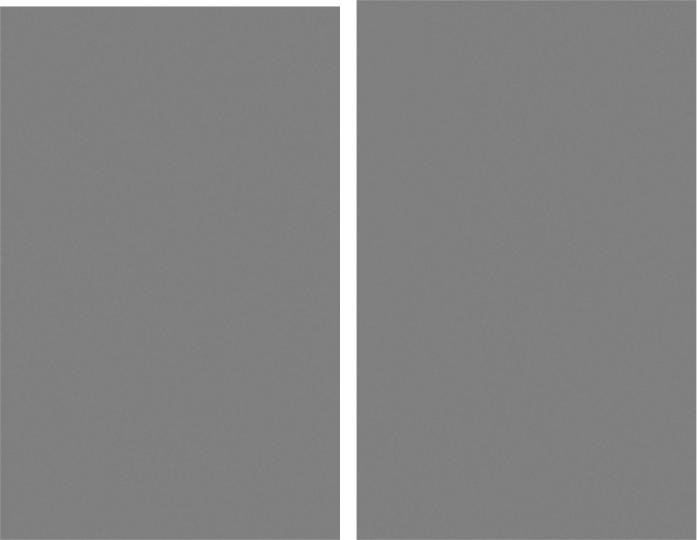
ICCROM_05_HistoryofConservation00_en
.pdf
Figure 93. The Round Temple in the Forum Boarium, Rome, before its restoration in the early 19th century (L. Piranesi)
Crown, Martial Daru, and the Mayor, Duke BraschiOnesti. The Commission was directly responsible to the Minister of the Interior, Montalivet, in Paris. (42)
In this period, the Accademia di San Luca came to play a more direct part in the conservation of ancient monuments. Beginning in the autumn of 1810, it was allocated special funds to be used for maintenance and repair works. These funds resulted from a visit of Canova to see the Emperor. In 1811, Canova was elected President of the Academy and later, in 1814, this was made an appointment for life. Thus his influence on the conservation of ancient monuments continued practically until his death in 1822.
Conservation of Ancient Monuments 1809-1814
The conservation of ancient monuments continued first along the lines that had been established in the first decade of the century. The earliest restoration during the French period was that of the circular temple in the Forum Boarium on the banks of the Tiber, dedicated to Hercules Victor - but generally called the ‘Temple of Vesta’. The original building dated from the end of the 2nd century BC, but it had been substantially restored after the flood of 15 AD. Later, the temple had been transformed into a Christian church and the spaces between the columns had been walled in. During the years 1809 and 1810, Valadier and Fea directed works in the temple. The walls between the columns were removed, and consequently, the damaged columns and the wall of the cella had to be repaired. This was done partly in marble, reusing existing elements found near the site, and partly in mortar. The roof and cella walls were left in their pre-restoration state and the church, dedicated to St. Stephen, could continue to function afterwards. The site was also excavated during these works. resulting in the discovery of the original
entrance. Later, iron railings were erected between the columns. (43)
In 1810, the Accademia di San Luca decided to excavate and consolidate the remaining three columns of the Temple of Vespasian - called the ‘Temple of Jupiter Tonans’ - in the Roman Forum. After the excavation, the base under the columns was found to be in such a bad condition that it needed rebuilding. For this reason, the columns were taken down and re-erected on the new basement built to the design of Camporesi. Although the original temple was built of marble, the new material was travertine, taken mostly from the demolition of the Colosseum. Plaster casts were made of the very fine marble trabeation and Corinthian capital capitals before they were put back and fixed in position with iron cramps. This was a relatively minor essay in conservation but nevertheless set a standard and provided a model for subsequent works. (44)
On the other hand, the Colosseum remained one of the major tasks in conservation. The consolidation of the south side in 1806 and 1807 had only secured a small part of this vast complex, and further
Figure 94. The Temple of Vespasian and Titus, Forum Romanum, Rome. Dismantling of the archittrave 1810-11
Figure 95. A-N. Normand: a plan showing the excavated area around the Arch of Septimius Severus in 1850
A History of Architectural Conservation |
Page 131 |

Figure 96. The Forum Romanum in 1818. The drawing shows the Temple of Vespasian and Titus restored
consolidation and maintenance were carried out by the Accademia on various parts of the building. Pillars and vaults had to be consolidated, for example, around the west entrance. Yet, in spite of this, a vault collapsed in November 1812 and the Intendant Daru accused Camporesi, the architect responsible, of inefficiency. (45) At the same time, excavation was carried out both outside and inside the Colosseum. The arena was excavated under the direction of Fea as part of the programme for embellishment of the city. The substructures were revealed in part and recorded. Most of these works were accomplished by the end of the French period in January 1814. However, this excavation reached a depth of only eleven feet, whereas the foundation would have been at least 21 feet under the street level. Outside the Colosseum, the aim was to excavate down to the original ground level and then form a sunken promenade around the building. One of the major problems in these excavations, especially in the arena, was the drainage of rainwater. Various proposals were made by the architects, Valadier and Camporesi, to use the newly discovered ancient drains. Fea, instead, suggested
Figure 97. The Temple of Vespasian and Titus: a detail of the architrave after the 19th-century restoration using metal cramps
rebuilding the ancient Roman fountain of Meta Sudante and using the rainwater to make it function for the inhabitants of the district. (46) However, no decisions were taken about the Colosseum at this time.
The Accademia received an annual sum of 75.000 francs for the maintenance and repair of monuments; excavations had a separate budget. This sum was relatively modest considering the amount of work that should have been done. Of necessity, therefore, work was limited to the minimum, consisting mainly of maintenance. In August 1811, Valadier and Camporesi proposed a system of inspection and the formation of a register of those ancient monuments that were under the care of the Accademia. The first list included about a hundred sites in Rome and several outside; temples, obelisks, baths, triumphal arches, mausoleums, theatres, bridges, etc. Outside Rome, it included sites in Tivoli, Palestrina, Frascati, Ostia and Via Appia. This was regarded as the first phase of an inventory that was intended to cover the entire Papal territory. A detailed report with descriptions of the state of the monuments and estimates of necessary repairs, classified according to urgency, were to form the bases of a balanced programme within the limits of the budget. Weekly reports were required on any conservation works - as was already the practice in the case of the Colosseum. Guards were also considered indispensable - at least for major sites such as the Colosseum. (47)
The Commission for Embellishment and the French Influence
The programme for the embellishment of Rome was defined in the decrees of 17 July and 9 August 1811. (48) It was to include the building of markets, improvement of navigability of the Tiber, the building and repair of bridges, the building of public promenades, the enlargement of squares, excavations and restorations. Markets were planned for various parts of the historic city; in some cases, it would have been necessary to demolish existing structures to make way for these new buildings. Such was the case in the projects for the Piazza San Marco, for the west side of the Pantheon, and for the area near the church of Madonna dei Monti, These projects were, however, never realized. Enlargement of urban squares in connection with public monuments was planned around the Pantheon, the Forum of Trajan, the Fountain of Trevi and in front of the basilica of St. Peter’s to open up the view from the Castel Sant’Angelo. (49) In this same period, French suppression of convents and closing of churches by
Page 132 |
J. Jokilehto |

Figure 98. Valadier: plan for a covered market in Piazza S. Marco, Rome
Figure 99. Plan for a piazza around the Pantheon, Rome
an edict of June 1810 resulted in further demolitions. This legislation caused an outcry for their re-opening and, during the autumn of 1810, the Commission for Embellishments employed architects to survey and report on the repair and annual maintenance of churches of special historic and artistic merit. 135 churches were declared worth conserving at public expense, including the basilicas of St. Peter’s, Sant’Ignazio, and S. Eustachio. (50)
Twopublicpromenadeswereplanned,oneonthehill of the Pincio - the ‘Garden of the Great Caesar’ -, the other in the area of the Forums called the ‘Garden of the Capitol’. (51) Valadier, who since 1793 had been preparing projects for the Piazza del Popolo below the Pincio, was put in charge of the Garden of the Great Caesar, while Camporesi was made responsible for the Garden of the Capitol. Jointly, they prepared plans for other projects such as the Pantheon and the Forum of Trajan, and several proposals were sent to Paris for approval. Montalivet was, however, not completely satisfied either with the projects or with the work already executed in some cases. The French representatives in Rome also accused the Romans of inefficiency and poor quality work. (52)
At the end of 1812, Montalivet decided to send two French architects to Rome in order to report on the situation. One of them was Guy de Gisors (17621835), a member of the Conseil des batimens of Paris, and the other was Louis-Martin Berthault (-1823), a recognized landscape architect and disciple of Percier who had designed the gardens of Malmaison and Compiegne. These two architects arrived in Rome in February 1813 and stayed until May of the same year. Berthault was commissioned to work especially on the two public promenades; Gisors had to examine the other projects under the responsibility of the Commission for Embellishments, and to study the methods of excavation, consolidation and restoration of ancient monuments (53). Berthault felt that all earlier projects had concentrated too heavily on single monuments; they had attempted to make “a frame for each painting” instead of trying to link the monuments in a more general comprehensive plan. Of the two projects, he considered the Garden of the Capitol the more important. Berthault’s intention was to make the Forum Romanum the focal point of the whole project, thus linking the Capitol and the
Figure 100. The Garden of the Capitol, Rome. The proposal of 1813 to ‘beautify’ the area around the Palatine with planted avenues and restored ancient monuments
A History of Architectural Conservation |
Page 133 |

existing ancient monuments with the Colosseum. On the Palatine, he planned a formal garden; a similar plan was also foreseen for the Pincio. Around the Palatine, he envisioned a system of promenades that extended from the Forum and the Colosseum to the Circus Maximus, the Arch of Janus and the two temples in front of S. Maria in Cosmedin on the banks of the Tiber. Ancient monuments were to be restored as a part of this master plan, providing both a reference to the history of Rome and a framework for the imperial ambitions of the present Emperor. (54)
The task of Gisors was more complex; he had to check all the demolition programmes and the planning of squares and public facilities, as well as to report on the conservation methods for ancient monuments. Daru had criticized the lack of a systematic method in the restorations of the Accademia di San Luca, and Gisors echoed him. He condemned the brick buttress to consolidate the Colosseum, as well as various other restorations executed before his arrival. To Gisors, in fact, an ancient monuments ought to be integrated in the same way as the Laocoon group had been treated in the sixteenth century. He considered the integration of the portico of the Pantheon by Bernini an ideal example to follow in future restorations. (55) The integrity of the Pantheon had already been discussed earlier; Daru had proposed demolition of the two bell-towers (56) - actually carried out after the unification of Italy at the end of the century.
Gisors’ principles for the restoration of ancient monuments were well expressed in a letter to Daru of August 1813:
“Ithink,thatinsteadofmakingshutters,shoresand props, in wrapping them in bandages - if I may
use these expressions, all |
the collapsing parts of |
historic buildings should be |
reconstructed at least |
enough to give an exact idea of their original |
|
Figure 101. Plan for the excavation and presentation of the area around Trajan’s Column, Rome (1813)
form and proportions, doing it either in stone or in brick, but in such a way that the reconstruction exactly outlines the parts that it is supposed to define.” (57)
The Arch of Titus, which had been ‘shamefully’ left near the point of collapse, was in a convenient position in the planned Garden of the Capitol and, consequently, would have made an excellent example for a restoration according to these principles. In fact, Gisors proposed carefully dismantling the original elements and then reassembling them in position, rebuilding the missing parts to give an idea of the original whole. Reference was made to his proposals in a report of the Conseil des batimens of Paris in August 1813, and also in a letter of Montalivet to the Prefect of Rome in September; in the latter, the Roman authorities were urged to apply these principles in all future restorations. (58) The French left Rome too soon for any immediate effect to be apparent, but many later works were conceived along these lines, such as the proposed restoration of the Arch of Titus and the second major consolidation of the Colosseum.
8.3 Conservation in the Papal States after
1814
Organization and Legislation
The failure of the Russian campaign in 1812, the rising resistance of European nations and the lack of support from his allies, eventually brought Napoleon to the end of his reign. In January 1814, he had to give up the Papal States and in May of the same year, after a period of transition, Pius VII was able to return to Rome in great triumph. The French legislation and regulations were abolished, churches were re-opened and the situation more or less returned to what it had been five years earlier.
In the period of transition, the Commission for Embellishments retained their responsibility for antiquities, though the budget was reduced from what it had been during the French period and works were even more limited. During the summer of 1814, the Pope nominated various people to his Camera Apostolica. Cardinal Pacca was appointed the Camerlengo and Marquis Ercolani became the Chief Treasurer. The Chirograph of 1802 remained in force until it was revised with an edict of 7 April 1820. (59) A Papal Dispatch of 7 July 1818 also gave specifications for the executive branch of the Treasury, the Consiglio d’Arte. (60) The edict of 1820 redefined the position of the Camerlengato and
Page 134 |
J. Jokilehto |

Figure 102. Guënepin (1810): the Arch of Titus, Rome, showing the condition of the monument before beginning of the restoration
the Commissione delle belle Arti. The Accademia di San Luca was represented by two members in the Commission, thus retaining a position as a consultative body, but being no longer in possession of a budget for the purpose of restoration.
Conservation Activities
There was a new initiative, this time successful, to bring back to Italy the works of arts that the French had taken away at the end of the eighteenth century. Canova, President of the Accademia di San Luca, was sent to Paris in 1815; with the support of other nations, he was able to collect a great number
Figure 103. Guénepin: Arch of Titus ‘restored’
of these objects in Paris and have them returned to Italy. (61) The yearly budget for the acquisition of objects to the Vatican Museums, foreseen in the Edict of 1802, brought results; and, in 1817, the Pope commissioned Stern to build a new wing for the Museo Chiaramonti.
In July 1814, a special commission reviewed the situation of the projects for restoration and public promenades. After the French departure from Rome, the works continued on some sites, while others had been postponed until further decision. The works in the Forum of Trajan were almost completed and it was decided to finish them, especially the retaining wall. Other retaining walls were ordered for reasons of public safety around the Column of Phocas and in front of the temple of Antoninus and Faustina which had been excavated. The projects for the public promenades were re-examined; Valadier was asked to prepare a new and considerably reduced plan for the Pincio, while the park for the area around the Fora was discontinued. (62)
The area of the Forum Romanum remained a centre of interest. Some plans were made by Stern and Valadier for the layout, but these were limited to minor works. Some excavation was carried out under the direction of Fea, who continued as Commissioner for Antiquities. These were financed by foreigners - Portuguese, French and English. Excavations on a larger scale had to wait until 1827, when the area around the Arch of Septimius Severus and the Temple of Vespasian was exposed and a path opened to the Capitol. In this period, too, discussions began about the extent of the antique Forum as well as the exact position of various monuments which were still underground. (63) Restorations also continued. Various repairs were necessary in the Colosseum and were executed under the control of the Accademia (as will be discussed later). The first major restoration after the departure of the French administration was that of the Arch of Titus.
Restoration of the Arch of Titus
The Arch of Titus was erected, after 81 AD by Emperor Domitian in memory of his deified elder brother Titus, whose capture of Jerusalem was commemorated in the bas-reliefs of the Arch. The monument was originally built of white marble and had probably had a travertine core. During the Middle Ages, it had lost much of its material; the bronze cramps holding the marbles had been removed. and a brick structure had been added. In the 12th century, it became the property of the Frangipani family, and
A History of Architectural Conservation |
Page 135 |

the central part was preserved as a gateway to their fortification on the Palatine. Abrick buttress was built to reinforce the structure in the fifteenth century, and further repairs were carried out in the early eighteenth century. (64) Even if the Arch had only partially survived, the artistic quality of its bas-reliefs attracted much attention. Theoretical reconstruction drawings had been prepared by Palladio, Dosio, Bellori and others. In 1815, the Accademia was presented with a small scale model in marble and gilded metal by Gioachino and Pietro Belli.
During the French administration, the convent buildings that had given some support to the Arch on its east side were demolished and, consequently, the condition of the monument became even worse. On the other hand, it had been chosen by Berthault as one of the key monuments in his plan for the Garden of the Capitol. After repeated requests by Daru, an inspection of the structure was made by a committee of the Accademia in April 1813. The Arch had settled in the centre due to the lack of lateral support and because the bronzecramps had been removed from
Figure 104. Valadier, Arch of Titus, plan and sections, showing results of excavation in the foundations
the marbles in the Middle Ages. The committee suggested consolidating the existing buttress and strengthening the piers. In addition, it was suggested that the “modern” brick walls, which had added extra weight on the top of the vault, be demolished. Nothing was done, however, and in 1816, a new commission, formed of Valadier, Camporesi and Stern, prepared a second report recommending the construction of a buttress. (65)
In 1817, Stern was finally nominated by the Treasury to be in charge of the restoration. The work was supervised by a committee consisting of Stern himself, Valadier and Camporesi. Stern prepared his project with the help of a young Venetian architectural student, and in 1818 he was ready to commission a mason named Giuseppe Ravaglini for the execution of the stone work. (66) According to a later report by Valadier, the first idea was “to use the well-known method of pushing the marbles back into position with the help of screws.” (67) On closer examination, this idea was abandoned, however, because it did not seem possible to keep the marbles in position.
Figure 105. Valadier, Arch of Titus: remaining fragments of the original monument toward the Forum Romanum
Page 136 |
J. Jokilehto |

Figure 106. Valadier: Arch of Titus, proposed restoration of the elevation toward the Colosseum (south). Original part is in darker shading
Consequently, it was decided to dismantle the vault, re-erecting it afterwards with the required support.
The project did not entail pure conservation as recommended by the Commissions in 1813 and 1816, but rather the completion of the monument, rebuilding the missing parts according to Gisors’idea.
Figure 107. The Arch of Trajan, Ancona, which served as a model for the restoration of the Arch of Titus (Piranesi)
Figure 108. Arch of Titus, detail showing the distinction between original (in marble) and new (in travertine and simplified details)
He had, in fact, proposed to dismantle and reassemble the original elements
“having first rebuilt in stone or brick the mass
of the missing |
parts of its pylons. From this |
|
operation, the |
result would be |
that, without |
spending much more than those shapeless supports would cost, this interesting monument would be re-established. Even if this were only in mass, it would still give an exact idea of the dimensions and proportions.” (68)
These ideas had been communicated to the Accademia di San Luca; later, they reappeared in a report of the Conseil des batimens in Paris and were recommended to the Municipality of Rome by Montalivet. In 1809-10, an alumnus of the French Academy in Rome, Auguste-Jean-Marie Guenepin (1780-1842) had also made a study of the monument preparing a restoration drawing of the better preserved elevation, which has great similarity with the project as actually carried out. (69)
Stern built a scaffolding and shored the endangered parts of the structure. Excavations were made to reveal the foundations and to verify the exact architectural form of the monument. By October 1818, the stonework was well advanced; it was then interrupted, however, due to Stern’s sickness and other engagements as well as delayed payments to the mason. The work continued in June 1820 after appeals by art lovers and urgent requests by Cardinal Pacca. Soon thereafter, however, Stern died and Valadier was nominated his successor. He continued the work where it had been interrupted, following the conceptual line established by Stern. (70)
The project was based on a detailed measurement and inspection of the remaining elements of the Arch
A History of Architectural Conservation |
Page 137 |

Figure 109. Arch of Titus: the side toward the Colosseum after restoration (Rossini)
and its excavated foundations. The triumphal arches of Trajan in Ancona and in Benevento were taken as models - thus following the example of various reconstruction drawings from the Renaissance onwards. The original elements were carefully countermarked and dismantled one by one using the support of a strong centering. After that, theArch was rebuilt, reassembling the original elements on a new brick core. The reconstructed parts were faced with travertine, which harmonized well with the original marble elements. The new parts were left plain without repeating the decoration, the bas-reliefs or the fluting of the columns, so that “the visitor would have no doubt about what was authentic and what had been built only to give an impression of the whole” as Quatremere de Quincy wrote in his Dictionnaire d’architecture in 1825/1832. (71)
Later, however, Valadier justified the use of travertine instead of marble by referring to the economic limitations at the time. (72) The works continued so that by June 1823, the cornice and the inscriptions were in position. The most difficult part was over and the rest was to be completed by the end of the year. (73) After that, there remained only work on the surrounding area, including a circular retaining wall around the Arch.
This restoration, like others preceding it, received mixed criticism. It was admired by some. Filippo Aurelio Visconti, secretary of the Commission of Fine Arts, considered it elegant, (74) and Quatremere referred to it in his Dictionary as the ideal example of restoration when dealing with a building that had columns, ornaments and figures. (75) Others - not only in Rome, but also in foreign countries - were more critical of the result; Stendhal, for example, complained the whole original monument had been lost, and that there was now just a copy of it. (76)
Figure 110. Arch of Titus: the side toward the Forum after restoration (Rossini)
Cardinal Consalvi and Cardinal Pacca had already questioned the methodological basis for the work in November 1822, when to their horror they discovered that
“instead of doing what was necessary for the conservation of the monument, a work of dismantling had started with the intention of reassembling it afterwards; that this tripled the cost, and that now the monument could be called the Arch of Pius - instead of the Arch of Titus, and that work had also caused damage to the basreliefs, breaking various parts...” (77)
Fea, too, said that he had not agreed with Valadier’s decisions; yet, although he had visited the site daily, he had never informed his superiors.
Valadier was asked to present an official justification for his work. This he did, making reference to the bad structural condition of the monument and saying that Stern had already brought the project to an advanced stage before his appointment. The justification was read at the Roman Academy of Archaeology in December 1821, and later published under the title of Narrazione artistica dell’operato finora nel ristauro dell’Arco di Tito. (78) Valadier was also asked to provide drawings to illustrate the project. These were published with the text, demonstrating the static conditions before restoration and the final appearance, differentiating between the original and the new elements. Cardinal Pacca accepted the justification, but there remained a feeling that the restoration had changed the monument for the worse, and that the new work dominated too heavily over the remnants of the original arch, and that the proportions might have been different in the original. In spite of all doubts and criticism, the restoration of the Arch of Titus laid some foundations for modern principles in
Page 138 |
J. Jokilehto |

the treatment of historic buildings, and has later often been referred to as a model.
The Colosseum
The excavations in the arena of the Colosseum were discontinued after the departure of the French administration. The substructures were recorded and a cork model was made of them. Another model had also been made of the whole building to the scale of one to sixty (79). After 1814, the excavated arena was again filled in, because the problems of draining the rain water had not been solved. Externally, works continued with the intention of forming a tree-lined circular promenade and of building a retaining wall to consolidate the hill-side. The ground floor arches were freed of later structures and excavations were made to expose the original entrance level. Afterwards, security problems necessitated the closing of the arches with fences that were made of wood and painted a bronze colour. Even this was not sufficient to keep out visitors who wanted to follow Goethe’s example and admire these romantic ruins under moonlight.
The plentiful vegetation was one of the aspects that attracted romantic minds. Minor areas had
Figure 112. Valadier: temporary timber shoring for the west wall of the Colosseum
Figure 111. Valadier: proposal for fences in the arches of the Colosseum
been cleared during the French period, but it had practically “been changed by time into an amphitheatre of rocky hills overgrown by the wild olives, the myrtle, and the fig tree, and threaded by little paths, which wind among its ruined stairs and immeasurable galleries”, as Shelley described in a letter to Thomas Love Peacock in 1818. (80) As late as 1846, Dickens wrote: “To see it crumbling there, an inch a year; its walls and arches overgrown with green; its corridors open to the day; the long grass growing in its porches; young trees of yesterday, springing up on its ragged parapets, and bearing fruit;
... to climb into its upper halls, and look down on ruin, ruin, ruin,...” (81) In 1815, Fea, proposed removing the roots which had caused damage especially in the upper stories, and consolidating the structure with iron straps. (82) Further proposals were made by the secretary of the Accademia di San Luca in the 1820’s, but more thorough removal of the plants was carried out only thirty years later, in the 1850s. This also caused criticism, because it was thought to affect the picturesque qualities of the ruined monument. (83)
The Accademia di San Luca continued to have control over the conservation of the Colosseum, even if otherwise it had less responsibility after 1814. Valadier and Camporesi were in charge of the works and they continued to make inspections and minor repairs. In February 1814, they had presented an estimated cost of the work that was most urgently needed. However, nothing was done and the same estimate was presented again in August 1815. This time, the consolidation was carried out and completed by November of the same year. (84) Two areas were concerned. One was the entrance side facing the Lateran and the other was the south entrance where several arches were completely missing and the standing pillars were moving. It was proposed to use
A History of Architectural Conservation |
Page 139 |

Figure 113. The Colosseum after the construction of the buttress by Valadier for the consolidation of the west wall
iron straps around the pillars that were cracking, and metal cramps to consolidate smaller defects. In some parts, the missing travertine surface was to be remade; in one area, the fallen stone wall was to be rebuilt in brick in order to restore structural stability.
By the year 1820, the end of the Colosseum’s outer range facing the Forum showed alarming signs of instability, and Valadier was instructed to build a timber shore to support it. This remained in placed for three years until definitive consolidation work was finally started. Valadier’s project involved rebuilding a part of the missing structure, thus forming a buttress. This would:
“imitate the antique even in minor details with the exception that, while the original was all in travertine, the new work - for economic reasons - had travertine only half way up the first pillars, in the springing points of the arches, column bases,
the capitals and in the cornices. |
These were |
necessary for reasons of stability. |
All the rest |
is made in brick imitating carefully |
the ancient |
mouldings, but being covered with a patina a fresco so that it looks as if it were travertine throughout.” (85)
Not everybody agreed with this proposal (e.g. Carlo Fea), but it was finally accepted by the Academy in December 1823. Work began soon afterwards and was completed in 1826. It was stated by Valadier that this method would facilitate the continuation and rebuilding of the entire Colosseum, if so desired. (86)
In October 1824, the Commission of Fine Arts came to inspect the restoration and voiced approval for the project. This commission was formed of Fea, Thorwaldsen and Visconti. Canova had died in 1822, and his disciple Albert Thorwaldsen (17701844), a Danish sculptor, had become the most influential figure in the Roman art world. He had been nominated the first professor of sculpture in the school of the Academy which had opened in 1812. Later, he was elected vice-president and, in 1827, president of the Academy. In 1817 he signed, together with Canova, Stern and other professors, the new statues of the Academy which recommended the careful study and zealous care of ancient monuments. As artists, Canova and Thorwaldsen represented very different approaches, even if both could be classified as neoclassical. Canova, in the tradition of Winckelmann, studied the ancient works of art and nature to find inspiration for his own work; but he never would have copied. Thorwaldsen, instead, was interested in studying the proportions of ancient sculptures in order to emulate them. When Canova was asked to restore the Elgin marbles, he refused out of respect for these works of the ancient masters; Thorwaldsen, on the other hand, agreed to invent and restore the missing parts of the marbles from Aegina that Ludwig I of Bavaria had bought for Munich (1816-1817).
The difference between these two approaches is also reflected in the conservation of the Colosseum. When Canova was Inspector of Fine Arts, the first buttress was built by Stern, Camporesi and Palazzi in order to conserve even the smallest fragment of the monument as a document from the past, without any reconstruction. Twenty years later, when Thorwaldsen was in the Commission, Valadier constructed the second buttress which was intended as a partial reconstitution of the monument. These two approaches represent the extreme dialectic basis for the treatment of historic buildings. On one hand, there was the respect for and pure conservation of the original material; on the other, the supposedly
Page 140 |
J. Jokilehto |
